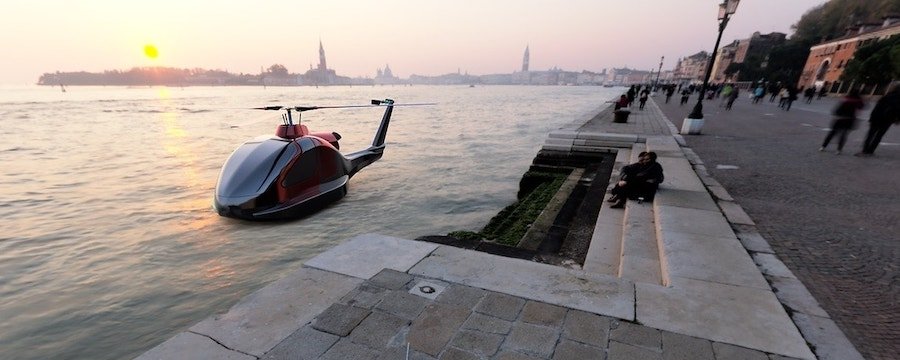Kenner K3 Anfibio Is an Amphibious Helicopter for Versatile Aerial and Aquatic Exploration

The introduction of the Coast Guard Rescue Swimmer program in the 1980s kind of eliminated the need for water landings, so the amphibious aircraft was eventually eclipsed and replaced by newer models, albeit conventional nonamphibious ones. However, for those who flew a Sikorsky helicopter, it was always reassuring to know that water landing was possible if the need arose.
Italian aerospace company Konner Helicopters wants to bring that capability back with its latest engineering endeavor: the Konner K3 Anfibio, a cutting-edge turbine-powered amphibious helicopter designed to blur the lines between air and water travel. Boasting an elegant design, a carbon fiber body, and high-powered performance systems, this new project aims to redefine the future of aviation.
Apart from flying through the air, this helicopter is endowed with the ability to land, take off and move across water, and seamlessly transition between the two, allowing for versatile exploration. As such, it is aimed not only at aviation enthusiasts and professional pilots but also researchers and rescue teams. According to the company, "The real innovation lies in its ability to land and take off from water, opening up a world of exploratory possibilities" and "introducing unprecedented versatility to aerial and aquatic exploration."
The beating heart of the K3 Anfibio is the TK-250 turbine developed in-house by Kenner. Touted as the lightest turboshaft engine in the world in its category, this powerhouse weighs in at just 50 kg (110 pounds) but is capable of developing 250 horsepower. The low weight to power ratio (5:1) makes it suitable for such an application as it allows for improved agility in both flight and flotation.
What's more, for a greater level of safety during flight, the helicopter is equipped with a Hybrid Assistance System, also developed by Konner Helicopters. Called HAS for short, this system comprises a 90-hp electric motor that provides a second source of energy and allows the pilor to perform a safe landing in the event of a loss of power by the turbine. The intervention is fully automatic, managed by electronics, and a digital display will provide the pilot with real-time system information.
As for the aircraft's amphibious capabilities, these are made possible by the integration of two electric jets and retractable skids. The electric water jets allow the K3 Anfibio to move on the water with the turbine off. They are also used together with the "position lock" function and the integrated GPS module to stabilize the helicopter and maintain the position once it lands in the water.
Moreover, these water jets ensure silent movement, as the two rotors do not move, and let the pilot cover a distance of up to six kilometers (3.7 miles) at a maximum speed of 15 kph (9.3 mph) in quiet mode. This is a very useful feature in multiple situations. For instance, it allows ecological researchers to navigate protected areas without the risk of disturbing local wildlife.
To enhance the amphibious capabilities and increase stability in the water, the Konner K3 is equipped with various other advanced technologies. The retractable skids, for instance, play a crucial part in allowing for stable water landings, even in shallow areas. They are activated by the pilot and retract into the lower part of the helicopter's body via an electric linear actuator.
Two electronically controlled side fins add to the amphibious helicopter's stability while navigating across water, as they change angle and automatically adjust to counteract the movement of the waves. The K3's V-shaped lower body design imitates the keel of a boat, which is also essential for consistent stability on water. Just like on boats, this design minimizes lateral movement for a smoother experience for the pilot and passengers.
All these stability-focused features are equally important for safe and comfortable water landings and for smoother takeoffs from a water surface. They are particularly important if the helicopter is used in rescue missions or scientific endeavors that require a stable position in the water.
As mentioned in the beginning, the Konner K3 Anfibio's fuselage is made entirely of carbon fiber for a stiff and lightweight structure. The material is treated with special resins and coatings to guarantee water resistance. The monoblock design, combined with this durable and lightweight material, contributes to increased fuel efficiency and easy maneuvering.
Designed for modern exploration with a plethora of innovative and practical features, the Kenner K3 Anfibio is a truly groundbreaking aircraft that could prove useful for very diverse applications, from rescue missions to marine exploration to aerial monitoring and more. A prototype version of the machine has already undergone testing, and it successfully landed and took off from water without any issues. Currently, the company is working on the final version of the amphibious helicopter, so we might hear news about series production soon.



